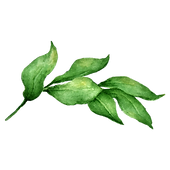
Areca Palm
Common name: Areca Palm/Butterfly Palm/Golden cane Palm/Yellow Palm/Golden Feather Palm/Madagascar palm
Scientific Name: Dypsis lutescens/Chrysalidocarpus lutescens
Indian name : Areca Palm (अरिका पाम)
Common name: Areca Palm/Butterfly Palm/Golden cane Palm/Yellow Palm/Golden Feather Palm/Madagascar palm
Scientific Name: Dypsis lutescens/Chrysalidocarpus lutescens
Indian name : Areca Palm (अरिका पाम)
This was the first houseplant that we ever parented, It used to stand alone by the side of a grey Sofa and that made a peaceful site to look at or sit by. We almost lost it to the harsh winters of the north India, but surprisingly a new bud started poking out from the woody stem and it came out to life. Since then we have planted and propagated many Areca palms at different spots around the house. They love misting and the way it dances under the spray, will surely make your day.
The Areca Palm is native to the islands of Madagascar where it is found in moist rain forest on slopes or along river beds. It is most common in sandy locations very close to the ocean. The climate of Madagascar is subtropical, with a hot and rainy season between November and April (summer), and a cooler dry season from May to October (winter). We try to mimic similar conditions to keep it thriving.

Maintainance
Benefits
“It is tolerant of the indoor environment, releases copious amount of moisture into the air, removes chemical toxins, and is also beautiful to look at. What more could one ask of a houseplant.
“Areca is consistently rated among the best houseplants for removing almost all indoor air toxins in the NASA's much discussed clean air study.

“This plant has unique ability to move salt accumulations to selected branches. When saturated, these branches die and should be quickly removed”Keep its root ball damp and provide fertilizer in springs which gives the plant most of the nutrients it needs for the entire season. The fronds will benefit from a micronutrient spray in summer.
Water the palm on a daily basis in summers to keep the soil moist. You know you’ve overwatered if you see a visible puddle forming on your soil.Mist regularly to give fresh appearance and to provide protection against insect infestation as spider mites and brown tips on fonds when atmosphere is too dry.

Repotting and propogation
• They also tend to do well when slightly under potted. When repotting a clump, be careful not to damage the root ball or bury the palm too deep.
• Areca palm houseplants need repotting every two to three years. The plant likes a tight container, and crowded roots help limit the size of the plant. The main reasons for repotting is to replace the aged potting soil and remove fertilizer salt deposits that build up in the soil and on the sides of the pot.
• Take care to plant the palm in the new pot at the same depth as in the old pot. Planting it too deeply can cause serious injury. The roots are brittle, so don’t attempt to spread them out. After filling in around the roots with soil, press down with your hands to make sure the soil is tightly packed. Eliminate air pockets by flooding the pot with water and pressing down again.
• Areca palms are planted from seed, usually many seeds to a single pot or cluster. It is unusual to find areca palm seeds, but if you do, you can germinate them at home by planting them at a uniform depth in the seed-starting soil. Orange-colored seeds, which are older, have a better germination rate than newer, greener seeds. Germination takes about six weeks under the best conditions with soil over 26°C and relatively high humidity.
• Areca palms are propagated from seed with approximately 50 seeds to an ounce. Viable seeds, soaked for 10 minutes in a solution of hot sulphuric acid, can be expected to germinate in about 6 weeks.
• Other method of propagation is by cutting offset from parent plant. Separate the offshoot with a knife. Pull the separated offshoot from the soil by the root. Soak the roots in a bowl of water for 1 hour. Transplant the seedling into a pot.
Where to plant it?
• It can be planted indoors as well as outdoors
• In coastal areas, warm temperate areas and in tropical regions, this species does excellent in full sun. This doesn't mean that it won't survive well in part day sun or strong filtered light. But, that it can withstand full sun. One would grow this species in a protected environment if he lives in an inland or desert area.
• An under planting of golden pothos or English Ivy adds to its aesthetic appeal.
